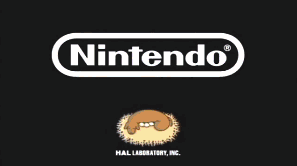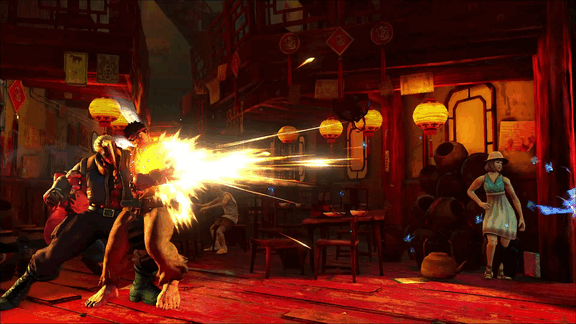Super Smash Bros. Melee: 15 years old, but still the King of Fighters
Super Smash Bros. Melee is over a decade old, Nintendo has released two official sequels since its release, and fans have even modded one of those sequels# to have gameplay similar in spirit to its aforementioned predecessor.

Ten years after its release, Super Smash Bros. Melee still remains a beloved industry anomaly whose unique gameplay and singular style continue to enrapture gamers looking for a more creative fighting experience.
Melee has an eternal appeal for two reasons: its infinitude of options and its immense difficulty.
Even after years of playing, any decent length Melee session will have entirely novel interactions. There’s no end to the possibilities, so as a spectator or a player, one always comes across new situations and techniques. For over a decade players have consistently been pushing what is possible, and things that were considered impossible years ago are now considered trivial.
For instance, Multishines# – a technique requiring an extraordinary level of precision that was previously thought too impractical for competitive play – are being executed in tournament settings at an unprecedented level. But execution aside, Melee also allows for amazing improvisation and expression.
Creativity shines through more in this game than almost any other. Melee’s analog control scheme allows for unparalleled freedom of playstyle, and in no RTS#, shooter, or fighter do you have as many viable options as in Melee.
Let’s take Street Fighter, for example…

Street Fighter’s inputs are digital. You can only jump forward, straight up, or backward.
In Melee, the inputs are analog, so you have full control over the momentum of your character and you can cover any distance within a continuum (i.e. the amount of horizontal distance you cover is a function of how far your joystick is displaced along the x-axis). This movement system makes it possible for one to practice just moving for years without every truly mastering it, as subtle variations in position allow for mind-games and amazingly precise spacing, cultivating eternal interest and motivation.
Along with the amazing movement comes an equally dynamic combo system.
Combos are a fun part of most fighting games. They look flashy and give newer players something to aspire to. Over the years many people have seen combo videos, become inspired to hone their own skills, and subsequently joined the competitive community. But Melee combos are uniquely variable because of a mechanic called “directional influence.”#
DI enables a player to influence the trajectory at which he/she is sent at when struck by an attack, allowing them to potentially get out of a combo instead of just watching themselves get hit. The effect of this is huge, not just because it gives the defender something to do, but because it allows you to interact with (and trick) your opponent during combos.
These DI mixups, along with the physics of the game, ensure that you will always be seeing combos that you’ve never seen before…
However, a game with such precise controls demands precise hardware.
We Melee fans don’t carry around 20-year-old TVs because we are sticks in the mud who don’t want to move on to thinner screens and higher resolutions; we’re actually forced to used clunky CRT TV# to achieve the extremely delicate timings necessary in Melee because modern displays simply create far too much input lag, leaving us with no other way to fully enjoy the game.
Because of Melee’s notoriously fast pace, many strategies have to be executed at the threshold of human reaction time. I call this the “Goldilocks Zone” – neither too fast nor too slow – and it gives a huge incentive to try to react to and input things with more precision and speed than you ever knew you could.
Melee is a game that runs at 60 FPS. In these terms, the threshold of human reaction is generally about 10 frames (this number increases significantly when there are many options to react to, and even moreso if the stimulus is unexpected). An attack in Melee can take anywhere from 1-20 frames to activate, but because of the DI mechanic, a player is expected to be able to react to any attack. Missing a DI input (that is, holding in incorrect direction when you are hit), often leads to immediate death. The difficulty and technical requirements of Melee deter many people from picking it up, but for those who persist, being able to execute difficult techniques is deeply gratifying.
Think of the technique we mentioned before, the Multishine. When done perfectly, it is possible to use Fox’s reflector shield attack 9 times in one second, which requires 17 unique inputs. Though it’s not the most practical technique, being able to pull it out on a whim and style on someone is an amazing feeling.
Here’s an example of famed commentator and community leader Toph applying this technique in a tournament match:
Critics of Melee often discuss its fans “ruleset” (e.g. that competitive players are ruining the spirit of the game, that it’s supposed to be casual and for parties), but their complaints only make sense in a context ignorant about the actual depth of the game. Let’s disregard whether authorial intent should influence how one plays the game; statistically speaking, the odds are infinitesimal that a game would accidentally allow such in-depth interactions. Subsequent Smash games lack such movement options and the speed that Melee offers (and no one was more disappointed than Melee fans).
Even if Melee were “Fox only, Final Destination” – as the meme goes# – it would still have amazing depth and be worth playing. Fans of other fighting games don’t seem too bothered by their lack of diverse stage layouts; RTS players seem perfectly content with having a handful of races to play. Similarly, Melee fans find enough depth within our competitive rules to have endless enjoyment.
As a final note, having two events in every Melee tournament is a unique Smasher experience. Singles and doubles are entirely distinct formats with different appeals and strategies, and working with a friend to overcome two foes who are of greater individual skill can be extremely satisfying.
Even a decade after its release, Super Smash Bros. Melee continues to be a staple of the industry, with both casual and competitive gamers relishing its exclusive, creative gameplay and intriguing level of difficulty. While the younger generations may flock to the newest Smash title, we are content to practice Multishining in our room on our bulky CRTs.
Submitted To E-Sports, Nintendo, Super Smash Bros
Like what you read? Share it.
(That helps us.)
Love what you read? Patronize Nick Whittier.
That helps us and the writer.
What is Patronizing? Learn more here.


